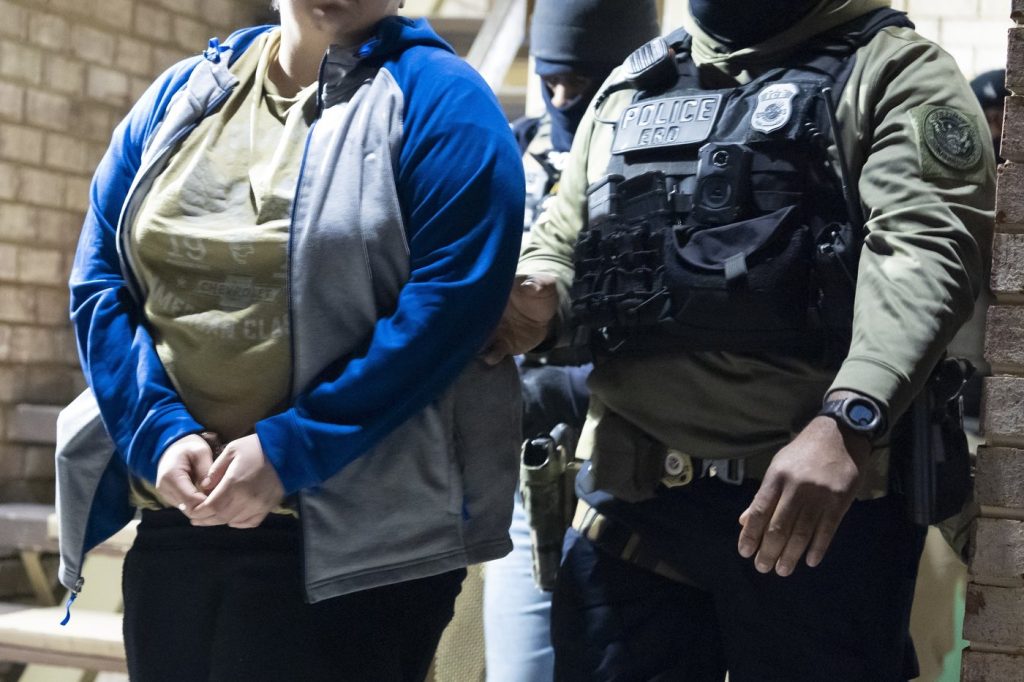WASHINGTON (AP) – The Department of Homeland Security (DHS) has issued a notice to over 500 “sanctuary jurisdictions” across the United States, indicating the Trump administration believes these areas are obstructing immigration enforcement efforts. This action is part of an ongoing strategy to increase pressure on communities perceived to be hindering President Donald Trump's mass deportation agenda.
On Thursday, the DHS published a list of these jurisdictions, stating that each will receive formal notification regarding their noncompliance with federal immigration laws. The list details cities and localities that allegedly resist collaboration with Immigration and Customs Enforcement (ICE) and restrict sharing of information with federal immigration officials. The compilation criteria included self-identification as sanctuary jurisdictions, levels of compliance with federal directives, and existing legal protections for undocumented individuals.
DHS Secretary Kristi Noem criticized sanctuary cities in a press release, claiming that local leadership is putting Americans and law enforcement at risk to protect “violent criminal illegal aliens.” Underlining this point, the Trump administration has persistently targeted states and municipalities that it accuses of failing to assist ICE in deportation efforts, fulfilling campaign promises made by President Trump to remove millions of undocumented immigrants from the country.
In alignment with this initiative, Trump signed an executive order on April 28, which mandates the Secretary of Homeland Security and the Attorney General to release a list of jurisdictions considered noncompliant with federal immigration laws. This list is intended to be regularly updated. Subsequently, federal departments are instructed to identify and potentially discontinue federal grants and contracts with these sanctuary areas if they are found to be noncompliant.
If a jurisdiction receives notice and is deemed to be “defiant” by the Trump administration, the Attorney General and the Secretary of Homeland Security are empowered to pursue legal avenues and enforcement measures to ensure compliance with federal laws.
Critics of the sanctuary designation emphasize that there is no legal definition that outlines what constitutes a “sanctuary jurisdiction.” Instead, it is often used to describe law enforcement agencies or communities that do not cooperate with federal immigration initiatives. Following the release of the list, some city leaders expressed concerns. Baltimore Mayor Brandon Scott asserted that his city is “not a sanctuary city,” highlighting that control over jail facilities—where ICE commonly communicates with local authorities—is not within the city's purview.
Despite this, Scott emphasized that Baltimore is a “welcoming city” and prepared to take legal action if necessary to defend its immigrant community and federal funding. In a separate statement, Las Vegas officials expressed confusion regarding their inclusion on the list, stating that local law enforcement complies with federal immigration laws.
ICE enforces immigration laws across the nation but often relies on state and local cooperation to identify and detain undocumented individuals. One approach to garner support from local agencies is through 287(g) agreements, which permit local law enforcement to undertake certain immigration enforcement responsibilities. The number of these partnerships has significantly increased under the Trump administration, effectively amplifying ICE’s capacity to manage deportations.
Communities that refrain from cooperating with ICE typically argue that such policies foster safer environments for immigrants, encouraging them to participate in reporting crimes as witnesses or victims without fear of deportation. They contend that immigration enforcement is primarily a federal responsibility, and local resources should focus on combatting crime rather than immigration issues.
A coalition of local officials and a nonprofit organization, Public Rights Project, responded to the DHS list by stating that sanctuary policies are legal and enhance community safety. They described the list as a tactic to intimidate local governments into compliance with ICE. The Trump administration has introduced various measures targeting jurisdictions that resist cooperation with immigration enforcement, including executive orders aimed at withholding federal funding from noncompliant areas.












